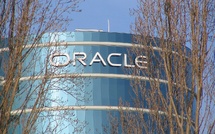This dramatic rise in the US budget deficit can be explained by the fact that spending rose by 47 percent (to $6.55 trillion) while income fell by 1 percent in 2020 compared to 2019 (to $3,419 trillion). The sharp increase in the difference between revenues and expenses started in April, after Congress introduced a $2.2 trillion package to boost the US economy (followed by another $483 billion package in May).
Promoting jobs and avoiding the rise of bankruptcies were the key goals of the initiatives adopted. The package was the biggest anti-crisis initiative in US history ($700 billion was allocated at the height of the financial crisis in 2008 to fund banks). It pays for subsidies to residents, an extension of unemployment insurance and increased support for hospitals in particular. In the form of subsidized loans and job assistance grants, companies have access to $500 billion. In addition, deferred payment of tax from the payroll has been given to businesses.
Disputes are now underway in the US over the latest assistance package. A $2.2 trillion support package has already been approved by the House of Representatives. The White House insists, however, that spending does not reach $1.6 trillion - so the bill has no chance of going through the Senate, where Republicans hold most seats. Nancy Pelosi, the Speaker of the House of Representatives, acknowledges that it is doubtful that the bill will pass before the presidential election. The absence of new support initiatives, however, may undermine the process of economic recovery, Fed Head Jerome Powell cautioned earlier. In September, US economic figures were mixed - after a 0.4 percent rise in August, industrial production dropped by 0.6 percent, but retail sales increased by 1.9 percent after a 0.6 percent increase a month earlier.
source: cnn.com
Promoting jobs and avoiding the rise of bankruptcies were the key goals of the initiatives adopted. The package was the biggest anti-crisis initiative in US history ($700 billion was allocated at the height of the financial crisis in 2008 to fund banks). It pays for subsidies to residents, an extension of unemployment insurance and increased support for hospitals in particular. In the form of subsidized loans and job assistance grants, companies have access to $500 billion. In addition, deferred payment of tax from the payroll has been given to businesses.
Disputes are now underway in the US over the latest assistance package. A $2.2 trillion support package has already been approved by the House of Representatives. The White House insists, however, that spending does not reach $1.6 trillion - so the bill has no chance of going through the Senate, where Republicans hold most seats. Nancy Pelosi, the Speaker of the House of Representatives, acknowledges that it is doubtful that the bill will pass before the presidential election. The absence of new support initiatives, however, may undermine the process of economic recovery, Fed Head Jerome Powell cautioned earlier. In September, US economic figures were mixed - after a 0.4 percent rise in August, industrial production dropped by 0.6 percent, but retail sales increased by 1.9 percent after a 0.6 percent increase a month earlier.
source: cnn.com



















